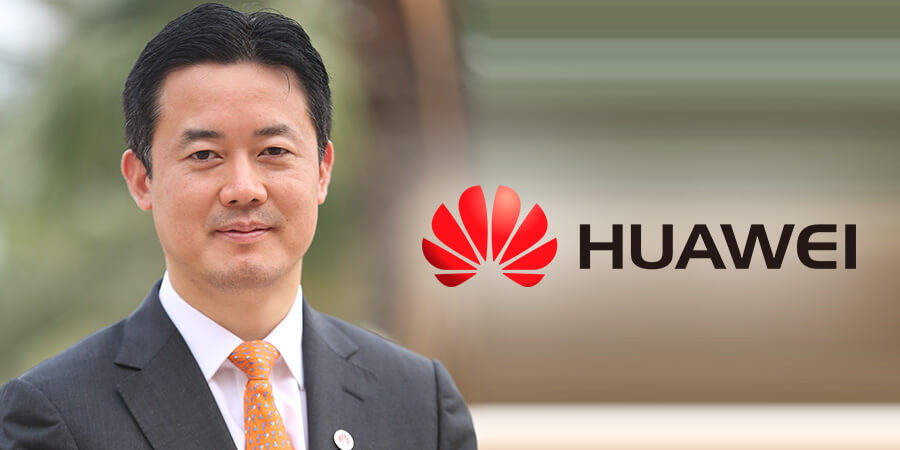Human history is the story of people and societies growing ever more connected. The pursuit of improved connections drives forward technology, and the development of technology drives forward human society.
Today, we are on the verge of becoming a fully digital society. ICT will be the foundation on which this world is built, and Huawei will contribute by continuing to invest in digital connections, digital homes and digital enterprises. Huawei aims to become an enabler of the digital society.
To understand how to create a roadmap to the future, let's take a look at where the Middle East stands today.
Right now, broadband penetration in the region has reached 50 percent. There are 500 thousand kilometers of fiber cables stretching across the Middle East, which has achieved a throughput of 10 terabytes per second.
The Middle East has already achieved a strong ICT infrastructure in this region. The next key step is to integrate ICT with industry operations. We see clear opportunities and challenges ahead of us to realize digital connection, digital home and digital enterprise.
I would like to share some recommendations for how to embrace the digital society by redefining telco industry.
- The development of 5G is critical to business success in the digital era
In the future, all things will be connected: this includes 100 million new generation bicycles, 300 million LED street lamps, 1.8 billion meters. At the same time, 10Gbps connectivity is essentially to foster the growth of top quality AR and VR experience. 5G will support all these connections. Huawei believes that nurturing the growth of 5G is essential to the next stage of digitalization. For this reason, in 2018, we will launch full-scale 5G network equipment solutions for large-scale commercial deployment. These solutions will enable global operators to deploy 5G networks at an accelerated pace.
- Operators should modernize current fixed-line networks in order to maximize their capacities and enable the creation of digital homes.
In 2017, the fixed broadband penetration rate is only 15 percent; 60 to 90 percent of countries' worldwide broadband rate is below 10M. Operators must modernize existing fixed-line networks in order to bring society closer to achieving widespread creation of digital homes.
The good news is that modernizing these networks is achievable. Here is how:
For copper lines, operators' assets value can be maximized by implementing the following solutions and technology:
- Speed-up technology
- Real-time inventory management
- Fault location & recovery tools
- A&M tools
For fiber, operators' broadband construction could be accelerated through the use of the following:
- Precise network planning
- Simplified construction process
- Super low delay network
- Unified field operation
- Networks and cloud must work in synergy in order to make B2B business more agile and accelerate the digitalization of industries.
We believe that our network and cloud synergy is the solution which will enable agile B2B services for digital enterprises through agility empowerment, innovative services and better experience.
Agility empowerment can be realized by a simple upgrade of traditional leased line service. Innovative services include connect-to-cloud solution, network-cloud-package, and network capability as cloud service. Lastly, better experience means improving the customer journey experience from awareness to purchase to implementation.
- Finally, it is vital for governments to create a supportive regulatory environment to nurture the growth of cutting-edge ICT. In particular, national policies should encourage long-term investment in the telecom industry.
We suggest that governments categorize ICT as a basic enabler of industry. This means ICT players will receive more spectrum resources, and the broadband access should be considered a right for the entire population.
This is not an outlandish suggestion; it has already happened in some countries. In China, the Ministry of Information Industry in collaboration with the Ministry of Construction has issued a law requiring that all new buildings include fiber to the home (FTTH).
Second, on the government level, we hope that the leadership of the region will issue a clear and detailed roadmap for the development of the ICT Industry.
To use China as an example again, in 2016, the Middle Kingdom launched the Broadband China Plan to promote the growth of broadband in the nation. The results speak for themselves: in the following year, 5.54 million kilometers of new fiber and optic cable lines were built nationwide, an increase of 22.3 percent over the previous year.
Lastly, we believe that that the government should encourage long-term investment to accelerate digitalization. Particularly, we hope to see more public-private partnerships created in the region. This will benefit not only the ICT industry; the Huawei Global Connectivity Index 2017 report has found that when there is a one point score increase in terms of digitalization, national GDP increases by 2.3%.
The digital society is not far, and growing nearer day by day. While there remain some obstacles in our way, Huawei believes that following the recommendations above will help nations overcome the roadblocks on the path to achieving full digitalization. We hope that governments, organizations and customers across the region will follow our suggestions and work with us to build a better connected world.
By Charles Yang, president of Huawei Middle East
